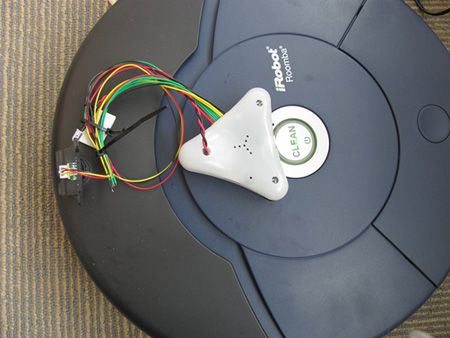Brainlink Gives Any Robot a New Brain
For just $125, you can instill your old robot with some new smarts
Roomba is a reasonably clever robot. Heck, for a vacuum, it's brilliant. But compared to other robots, it's lacking some sensors and skills that are starting to become downright basic. Roomba could use a new brain, and since it's a robot, you can actually just go and do that now.
Brainlink is a little piece of hardware that can augment (or replace) the brain that's currently powering your robot. Yes, your robot. Any robot at all, pretty much, as long as it's controllable with an IR remote or a serial connector or some other common type of interface. Brainlink itself (the plastic triangle thingy in the above pic) talks to your Android phone (or a computer) via Bluetooth, enabling programming and wireless control of whatever it's attached to.
In addition to providing a new programming interface for robots that may not come with one, Brainlink can also be configured to use a wide variety of sensors. A three-axis accelerometer and a light sensor are built in, and there's a whole heap of digital and analog connectors that make it easy to plug in, say, proximity sensors to keep your Roomba from running into stuff. Watch:
The overall idea with Brainlink is that there are a bunch of robots out there (I'm looking at you, WowWee) available for very cheap with fundamentally sort of decent hardware, but no easy way to get them to do what you want. Brainlink provides these less-than-clever robots with a new level of usefulness that makes them suitable for anyone with desire and some basic programming skills to mess with. A Brainlink module will set you back $125, but I'd say that's not too much to ask for a brand new brain, right?
[ Brainlink ]
Evan Ackerman is a senior editor at IEEE Spectrum. Since 2007, he has written over 6,000 articles on robotics and technology. He has a degree in Martian geology and is excellent at playing bagpipes.
